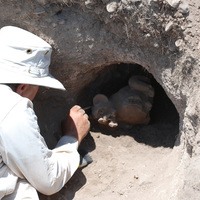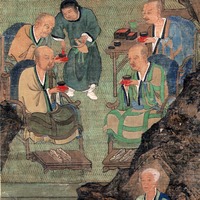
Kuei-chen Lin
Related Authors
Anke Hein
University of Oxford
Gary Feinman
Field Museum
keith knapp
The Citadel
Shih-shan Susan Huang 黃士珊
Rice University
Krisztina Hoppál
Eötvös Loránd University
Gideon Shelach-Lavi
The Hebrew University of Jerusalem
Armin Selbitschka
Ludwig-Maximilians-Universität München
Shao-yun Yang
Denison University
James A Benn
McMaster University
Ulambayar Erdenebat
The National University of Mongolia










Uploads
Papers by Kuei-chen Lin
suggests that it was less strictly organized than the Sanxingdui settlement and that it was inhabited by heterogeneous social groups during the early Bronze Age. Measuring and evaluating the standardization of two types of pottery vessels (i.e., jars with small bases [xiaopingdi guan小平底罐] and saucers with pointed bottoms [jiandizhan尖底盞]) reveal that potters employed different patterns for products to be used in different contexts. Vessels are more standardized at loci close to the sacrificial zone (where ritual paraphernalia were buried), while vessels used as burial goods tend to be smaller. Pottery production was loosely organized, ranging between individual and nucleated workshops, and widely distributed across loci both near the sacrificial zone and on the periphery of Jinsha. The sacrificial zone at the center of the settlement apparently created needs that promoted production activities. The presentation of multiple types of production in the Jinsha core, together with religious activities and public buildings, suggests not only multiple chaînes opératoires for objects but also communal activities and entangled social relations. Such gatherings and driving forces enabled different social groups to redress social tensions while promoting consensus. Crafters might have cooperated when necessary, but they were otherwise organized in a flexible manner, maintaining at most a loose network of production.
suggests that it was less strictly organized than the Sanxingdui settlement and that it was inhabited by heterogeneous social groups during the early Bronze Age. Measuring and evaluating the standardization of two types of pottery vessels (i.e., jars with small bases [xiaopingdi guan小平底罐] and saucers with pointed bottoms [jiandizhan尖底盞]) reveal that potters employed different patterns for products to be used in different contexts. Vessels are more standardized at loci close to the sacrificial zone (where ritual paraphernalia were buried), while vessels used as burial goods tend to be smaller. Pottery production was loosely organized, ranging between individual and nucleated workshops, and widely distributed across loci both near the sacrificial zone and on the periphery of Jinsha. The sacrificial zone at the center of the settlement apparently created needs that promoted production activities. The presentation of multiple types of production in the Jinsha core, together with religious activities and public buildings, suggests not only multiple chaînes opératoires for objects but also communal activities and entangled social relations. Such gatherings and driving forces enabled different social groups to redress social tensions while promoting consensus. Crafters might have cooperated when necessary, but they were otherwise organized in a flexible manner, maintaining at most a loose network of production.